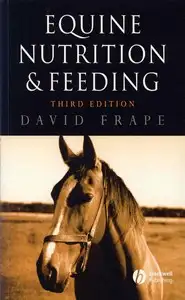
الكاتب: Multiple References
Fluoroquinolones are extensively used in the treatment of systemic bacterial infections in poultry, including systemic Escherichia coli bacillosis, which is a common disease in turkey flocks. Marbofloxacin has been licensed for use in various mammalian species, but not as yet for turkeys, although its kinetic properties distinguish it from other fluoroquinolones. For example, the longer half-life of marbofloxacin in many animal species has been appreciated in veterinary practice. It is generally accepted that, for fluoroquinolones, the optimal dose should be estimated on the basis of the pharmacokinetic (PK) and pharmacodynamic (PD) characteristics of the drug under consideration. Knowledge of these specific data for the target animal species allows the establishment of an integrated PK-PD model that is of high predictive value. In the present study, the antibacterial efficacy (PD indices) against a field isolate of Escherichia coli O78/K80 was investigated ex vivo following oral and intravenous administration of marbofloxacin to turkeys (breed BUT 9; six animals per group) at a dose of 2 mg/kg of body weight (BW). At the same time, the serum concentrations of marbofloxacin were measured at different time intervals by a standardized high-performance liquid chromatography method, allowing the calculation of the most relevant kinetic parameters (PK parameters). The in vitro serum inhibitory activity of marbofloxacin against the selected E. coli strain, O78/K80, was 0.5 g/ml in the blood serum of turkeys, and the ratio of the maximum concentration of the drug in serum to the serum inhibitory activity was 1.34. The lowest ratio of the measured serum concentration multiplied by the incubation period of 24 h to the serum inhibitory activity required for bacterial elimination was lower than the ratio of the area under the serum concentration-time curve (AUC) to the serum inhibitory activity. These first results suggested that the recommended dose of 2 mg/kg BW of marbofloxacin is sufficient to achieve a therapeutic effect in diseased animals. However, considering the risk of resistance induction, the applied dose should be equal to an AUC/MIC of >125, the generally recommended dose for all fluoroquinolones. According to the PK-PD results presented here, a dose of 3.0 to 12.0 mg/kg BW per day would be needed to meet this criterion. In conclusion, the results of the present study provide the rationale for an optimal dose regimen for marbofloxacin in turkeys and hence should form the basis for dose selection in forthcoming clinical trials.
تحميل كتاب Integration of Pharmacokinetic and Pharmacodynamic Indices of Marbofloxacin in Turkeys ، تحميل كتب ، تحميل كتب PDF ، تحميل كتب طب بيطرى PDF ، تحميل روايات PDF ، أحسن موقع تحميل كتب PDF ، أفضل مواقع تحميل كتب مجانية






هذا المحتوى مخفي
جميع خدماتنا مجانية .. يرجى دعمنا والمشاركة علي إحدى مواقع التواصل الإجتماعي
أو انتظر 10 ثانية لظهور المحتوى